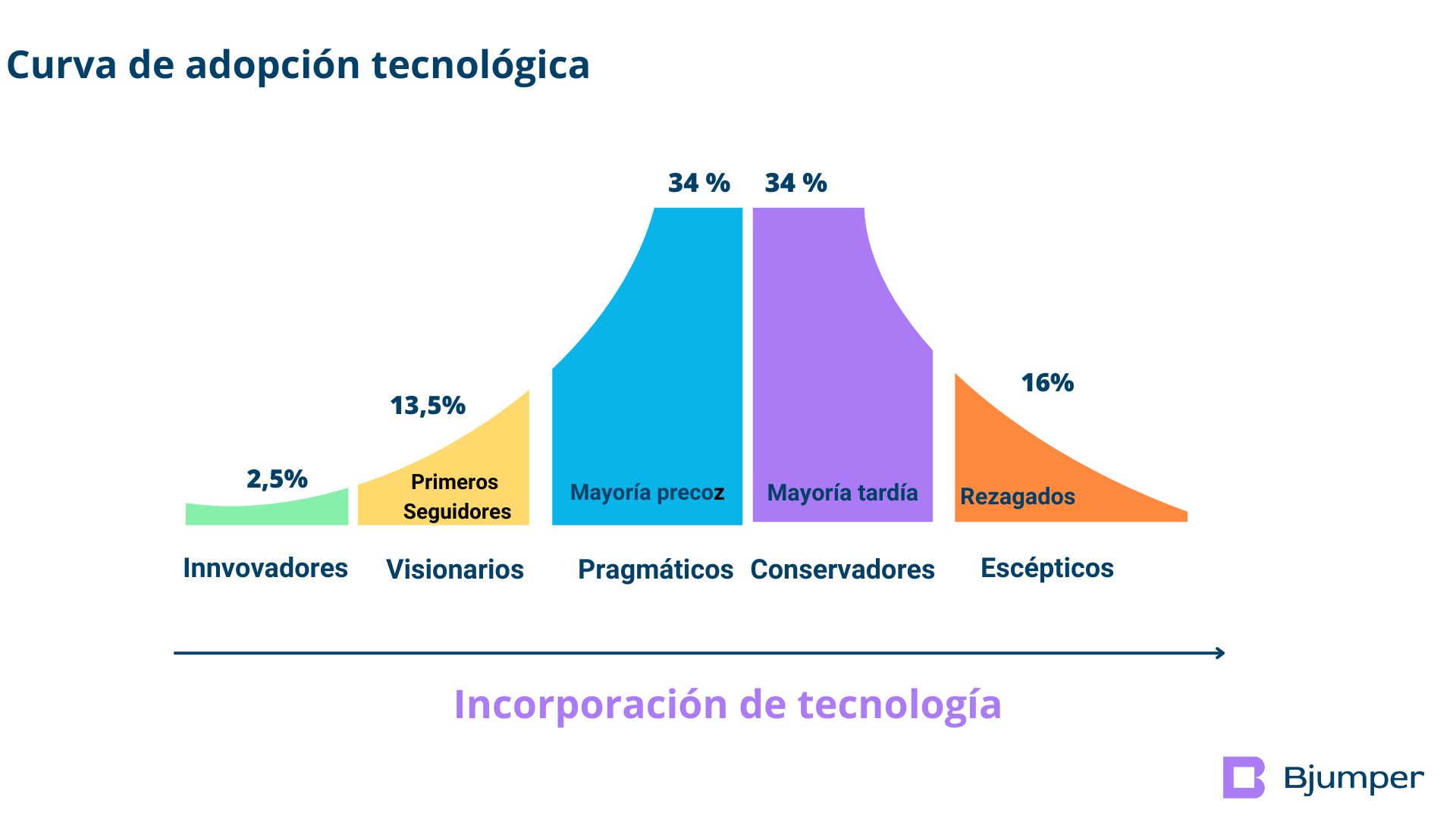Indeed... it's a phrase we say to ourselves many times throughout our lives. It would be endless to comment on the number of situations that we have used it in one way or another....
Depending on the way we approach things, this phrase can become a great moment for many, facing it with excitement, looking forward to tackling the situation in an expectant and positive way. However, for others, it can be a situation that generates some respect and fear when dealing with it, even though they know in many cases that sooner or later they may have to go through it..
As we mentioned, there are countless cases and situations, such as when we face technology..
It is clear that depending on our age or circumstances, our willingness to use or acquire technology is likely to be different, right?.
One of the reasons when making the decision to use or acquire such technology is motivation. The daily grind often prevents us from making progress in the search for better technologies because we are content with what we have, even though we know the daily problems and inconveniences we encounter when doing our work. Hence the phrase, "better the devil you know than the devil you don't"... but my friend... we all know that this has an expiration date over time.
However, when we make the decision to take the step forward for whatever reason and actually use a useful technology that frees us, another saying may come to mind: "Why didn't I do this sooner?"
Well, don't worry, it's normal if you've asked yourself that question at some point. It's not easy to decide, is it? Perhaps it's because you are part of the group of pragmatists or conservatives who think it's better to verify that the technology is already tested and really meets your expectations before taking the plunge..

Fortunately, for that group, there are other people who have tried that technology before... The so-called technology enthusiasts or innovators (who make up about 2.5% of people) or the visionaries, who are the early followers (around 13.5%). These are the so-called Early Adopters.
As Mark Zuckerberg once said
“The biggest risk is not taking any risk. In a world that is changing quickly, the only strategy that is guaranteed to fail is not taking risks”
I'm convinced that these percentages mentioned earlier may remain over time, but companies won't have the time to wait and verify with such a margin whether that technology will work for them based on their needs or not. They will have to take risks if they want to move forward...
For all the reasons mentioned, being an Early Adopter today can lead the company to achieve its goals faster than expected.
- Solving common problems. Using useful and current technology before your competitors makes it possible to improve workflows to be more efficient. Solving the same problems that are already known in the industry provides a significant competitive advantage because, as we mentioned earlier, the mainstream market is much more pragmatic and conservative, and they are not willing to take risks, which makes them much more vulnerable.
- To be a pioneer in your industry. A study conducted by Harvard Business Review found that early users have advantages over their competition. According to 57% of the respondents, this reason drives business growth and innovation, and organizations experience greater revenue growth and market positioning. Overall, the study demonstrates that early adoption of new technologies leads to better business outcomes.
- Being the first to adopt: It means being the first to overcome the learning curve and stop addressing problems manually. By being the first, you have more time to implement the technology effectively and integrate it with your systems before the competition can react in time, thus losing market position.
Being a pioneer and visionary carries certain risks, but having proper training along with the right partner helps to minimize the risk to a large extent. Allocating resources at the beginning to create ambassadors within the companies that promote useful technologies helps to minimize the risk and lead the company to sustainable leadership positions in the market.
Being a crucial player in the development of that technology. In these initial phases, everyone's experience is crucial. Integrating Technology, Process, and People is the best tool to tackle challenges. Being an Early Adopter has the advantage of having a closer relationship with supplier partners by presenting yourself as a very interested party, thereby gaining a significant competitive advantage.
En empresas como Bjumper valoramos mucho la opinión de nuestros socios; sus comentarios, sus problemas, sus situaciones del día a día son muy importantes para nosotros. Toda esa experiencia aportada por nuestros socios hace posible que podamos devolverla al mercado buscando, adaptando o desarrollando tecnologías útiles que hagan más fácil, segura, sostenible y rentable las infraestructuras críticas IT de nuestros socios.
Por último, quiero comentar que adaptar Tecnología Útil para las infraestructuras críticas IT es hoy ya un motivo de supervivencia, pero adaptarla de manera temprana significa además innovar… Sin innovación no hay futuro… No comentas la locura de ser siempre conservador si no quieres desaparecer en unos años… los tiempos han cambiado.
Ahora es el momento, no esperes a que tus competidores ya tengan la tecnología que tú necesitas…, no esperes a que te la pidan tus clientes… No formes parte del grupo de escépticos o rezagados… Porque quizá después sea ya demasiado tarde.

Let It Work For You